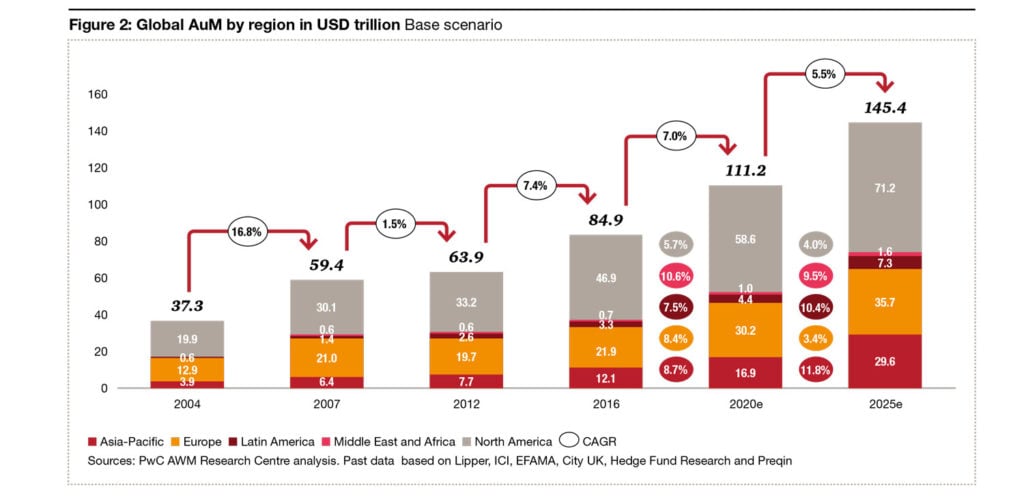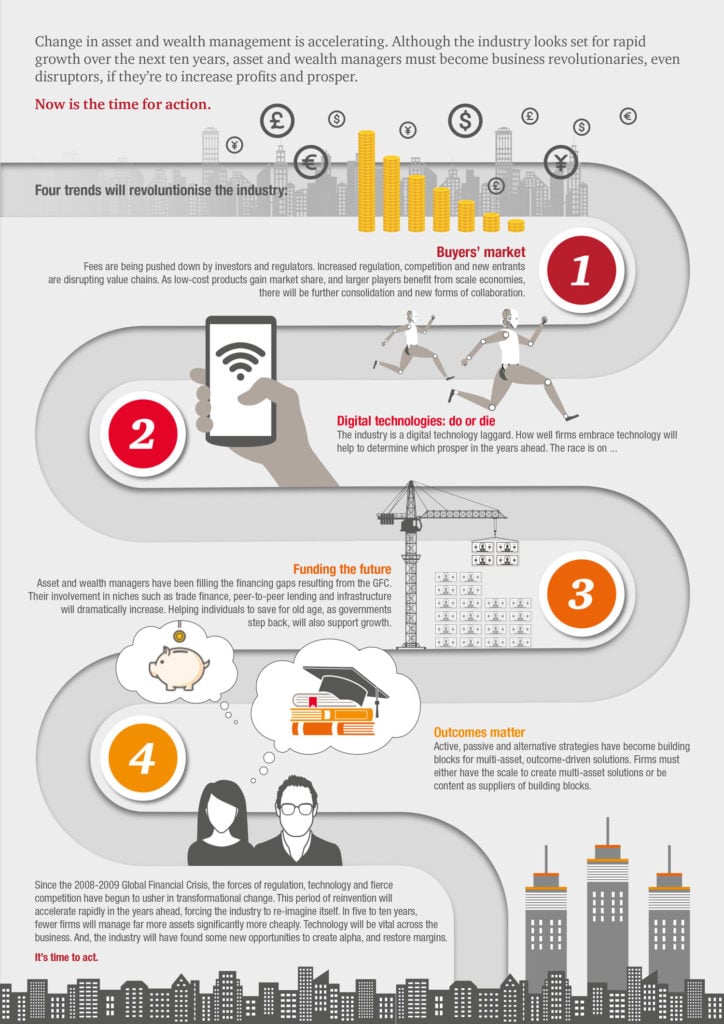A new report from PricewaterhouseCoopers (PwC) has indicated a projected growth for the asset management industry in the next 10 years, but with this comes the necessity for firms to increase their adoption of innovative technology in a time of significant “transformational change”.
By 2025, global Assets under Management (AuM) are projected to reach US$111.3 trillion, which is almost double the size of the figure in 2016, being US$84.9 trillion. This great increase, PwC predicts, is to be driven to “the burgeoning wealth of high-end individuals and the mass affluent”.
 This dichotomy of have and have-nots, as it were, is also reflective of asset management firms that are up-to-date in their digital offerings. Lacking the necessary technologies to comply with stricter regulations, which have been stacking up since the financial crisis, mean that a drastic “do or die” scenario is the present reality for asset managers. If they are not displaying that they are equipped to deal with the extreme growth of AuM, they will struggle to compete in the current climate.
This dichotomy of have and have-nots, as it were, is also reflective of asset management firms that are up-to-date in their digital offerings. Lacking the necessary technologies to comply with stricter regulations, which have been stacking up since the financial crisis, mean that a drastic “do or die” scenario is the present reality for asset managers. If they are not displaying that they are equipped to deal with the extreme growth of AuM, they will struggle to compete in the current climate.
PwC’s Global Asset & Wealth Management Leader, Olwyn Alexander, drills this point home by stating quite strongly that “every firm must embrace technology, as it impacts all functions and will determine if they win or lose in this fast-changing landscape.” Truly, even the basic function of asset management firms will be digitally altered from here on out; the report is fairly adamant that such technologies as machine learning and artificial intelligence will alter portfolio management processes, whilst blockchain technology has the potential to completely overhaul the services industry.
Traditional financial firms will increasingly seek to partner with disruptor services (or design their own products in-house), whilst also hiring employees with innovative skills to offer the best digital services to clients and investors.
Furthermore, managing director and global strategy leader for asset management at PwC, John Siciliano, highlights that wealth managers should no longer see a distinction between front, middle and back-end office functions – all need to inclusively contribute to the technological development of the firm. This should boost the level of instant outcomes and solutions which clients are increasingly looking for, whilst transparency in fees and investment research is a requirement for both consumers and regulators globally. This remains a particularly prevalent issue for an asset manager in the EU under the incoming MiFID II directive.
If PwC’s prophetic visions for the industry are to be believed, money managers will no doubt have to streamline their strategy to remain competitive, offering more assets whilst charging lower fees, and providing a trustworthy and transparent service to their clients. This starts with the adoption of advanced technological capabilities which will continue to advance in the next five to ten years. If asset managers can cope with digitalisation now in this transformative period, then they will surely survive.



